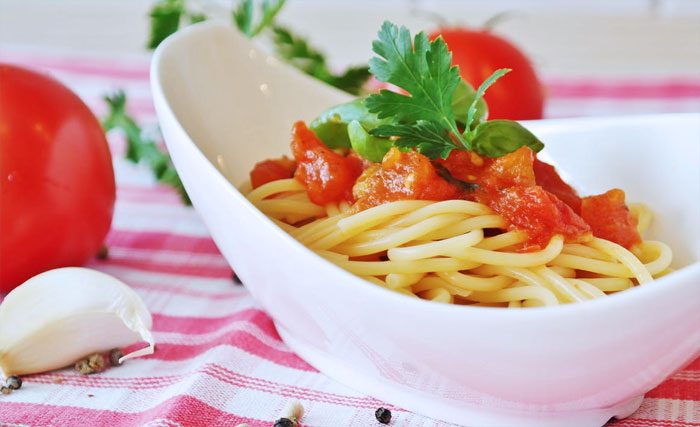
Written By: Elizabeth Daeninck, MS, RD
Title: Registered Dietitian
Alumni: Colorado State University
Last Updated on:

Have you ever had a friend tell you that they were giving up carbs? Are you confused by all the talk of carbohydrates? If so, you are not alone. Read on to check out our good carb guide to help you load up on good carbs and cut back on bad carbs.

Carbohydrates, despite their bad rap, are an essential component of a healthy, well-balanced diet. But what kind of carbs?
Carbohydrates are found in many foods in different forms: sugars, starches, and fiber. Your body requires all three forms at different times. For example, during long periods of exercise (lasting more than 1 hour), sugars are the best source of fuel – they are used quickly by the body when your body needs energy most. By contrast, starches and fiber should be the bulk of your carbohydrate intake on a daily basis. This is because starches and fiber are broken down slower by the body and provide the body with dietary bulk (fiber) to help with digestive health, controlling blood sugar and cholesterol levels, and preventing some types of cancers.
You probably have a good idea of what the “bad” carbs are – baked goods like cookies and cakes, as well as highly refined sugary foods such as sodas and candy. However, there are foods that are considered to be good sources of carbohydrates, unless the portion gets out of hand. For example, a typical bagel is equivalent to 3-4 slices of bread! So, the bottom line with carbohydrates is to ensure that you are not overdoing your portions.
Consider all the sources of carbohydrates for your meal and make sure that you are consuming a reasonable amount for your dietary needs (dependent on your size and activity level). Generally, we don’t need more than the equivalent of 2 slices of bread and 1/2 to 1 cup of fruits and/or vegetables each meal.
Alumni: Colorado State University – Elizabeth Daeninck is a Registered Dietitian with a master’s degree in Exercise Physiology and Nutrition. She has taught classes at the college level and facilitated weight loss group meetings, presented a variety of nutrition seminars and is a published author and researcher in the field of nutrition.
beans, bread, carbohydrate, cereal, pasta, vegetables